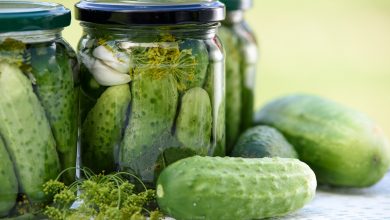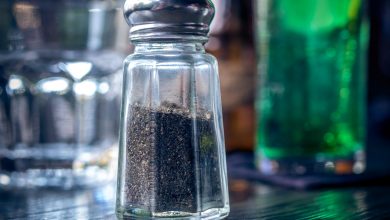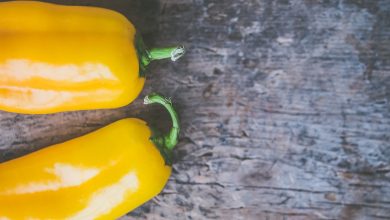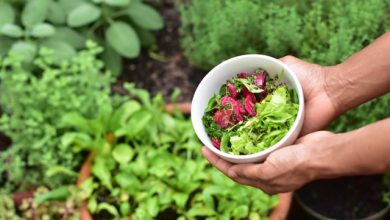How to Grow an Indoor Herb Garden

Herbs are crucial ingredients to an endless number of delicious dishes. Nothing is worse than coming across the perfect recipe but not having that one vital ingredient to spice up the meal. Sure, you could run to the store, but it can feel like a wasted trip if you only buy one small item. And let’s say you do run to the store to buy that small bunch of basil, but the recipe only calls for a handful of leaves. Now you’ll be watching daily as the rest of the basil goes bad on your counter.
If you have an indoor herb garden, however, you will never run into either of the two scenarios above. With your own garden of freshly grown herbs, you will never have to watch your store-bought herbs whittle away and die, only to be thrown in the garbage. Instead, you can select as much or as little of an herb as you’d like, and you won’t have to pay a dime to do so. So let’s go over exactly how to grow an indoor herb garden, including what herbs you should grow and how to make them happy.

7 Herbs That Grow Well Indoors
Basil
Basil is not only an excellent addition to a variety of cuisines, including Italian and Thai dishes, it’s also good for you. Basil is a great source of vitamins A, K, and C, as well as iron, magnesium, and omega-3 fatty acids.
Bay
Bay leaves can add some serious flavor to many dishes and can be used whole, dried, or ground. Try adding a dried leaf the next time you make rice.
Cilantro
Cilantro is a cool-season crop, so it is the perfect option for someone that has a room that gets less sunlight.
Rosemary
In addition to its delightful taste, rosemary is known for improving memory, increasing blood circulation, and boosting the immune system.
Mint
Mint can be a fun addition to smoothies and cocktails. It’s also been shown to have anti-inflammatory properties.
Thyme
Thyme is a versatile cooking spice, but it can also help alleviate sore throats, arthritis, and upset stomachs.
Dill
If you are growing cucumbers, you will also want to grow dill. Unless you have a hungry family of ten, your cucumber plant will likely make more than enough cucumbers to add to meals each week. Luckily, you can pickle your extra cucumbers to eat them later. And when you make pickles, you will likely want to use dill in the mix.

3 Tips for Growing Herbs Indoors
Buy Grown Plants Instead of Seeds
Starting with a grown plant gives you a head start and provides a boost of confidence for beginners. Growing herbs from seeds is a much more time-intensive process that may not always produce immediate results.
Trimming Your Plants Makes Them Happy
Trimming your plants to use in meals is actually a great way to promote healthy new growth. But make sure you’re never cutting off more than a third of a plant at a time. The reason for this is that you want to leave enough foliage on the plant for it to absorb the sun, create energy, and continue growing well.
Choose Varieties That Stay Compact
You don’t want to wake up one morning to find that your plant is three feet tall by three feet wide. Not only do you likely not have enough space for that type of herb, but larger varieties also do not grow as well in pots.
How To Grow an Indoor Herb Garden
Lighting
Most herbs require full sun, which is typically six to eight hours’ worth of sunlight per day. A south or southwest facing window is ideal for your herbs, so if you only have north-facing windows, you will need to provide supplemental light. There are many options available when it comes to growing lights, from incredibly sophisticated towers to simple clamp lights for a single plant.
If you don’t have light coming straight down on your plant, for example, on a window sill, you will want to rotate the pot at least once a week. If you don’t rotate it, the plant will start leaning towards the sunlight, which can lead to less than desirable growth.
Most herbs prefer at least six hours of sun per day, but there are varieties that do not require quite so much light. The following herbs can grow in lower light settings.
- Mint
- Chives
- Parsley
- Cilantro
- Tarragon
- Golden Oregano
- Wild Bergamot
- Lemon Balm
- Thyme
- Sweet Woodruff
- Anise
- Red Perilla
- Spicebush
- Borage
- Chervil
- Stinging Nettle
- Lovage
- Sorrel

Watering
Watering can be one of the more difficult tasks when growing an herb garden. The challenge with watering is that there is no simple solution. The amount of water an herb will need is completely dependent on where you have them in your house, what time of year it is, what size of pot they’re in, and what type of soil they’re growing in.
With so many variables, it is up to you to read your plants and self-diagnose how much water to give them. But that doesn’t mean there aren’t tips to help you navigate these waters. The first is the finger test. Simply place your finger about one inch into the soil. If the soil feels wet, you can skip your watering for that day. After a few weeks of this trial by error, you should start to get into a routine of how much water each plant needs.
Of course, if you see a plant start to get droopy, it is begging for water. But we would rather not let it get to that point. The biggest key to remember when it comes to watering your herbs is to err on the side of less watering. If you notice your plans start to turn from green to yellow, that is a telltale sign that they have received too much water at some point.
Drainage and Soil
The most important aspect of getting your drainage and soil correct is buying pots with drainage holes. You should never plant an herb in a pot without a drainage hole. Going a step further, take the bottom tray that the pot sits on and fill it with pebbles. This will give the water a place to drain rather than the pot sitting on the water and wicking the moisture back up. It also allows for better airflow for your plant, which will keep the roots happy and keep fungal issues at bay.
You also need to use potting soil rather than garden soil. The main reason for this is the difference in how the two types of soils absorb water. Make sure to buy a quality potting soil for the best results.
The soil also works hand in hand with the kind of pot you are using. Terracotta is an excellent option for herbs because its material is breathable. This means that air can flow in and out of the sides of the pot. If you are using a plastic pot, be aware that you may not have to water the plant as much as there will be less airflow. The one thing to remember with terracotta pots is to make sure that the bottom tray is glazed. If it is not glazed, the water that passes through your plant to the tray will eventually seep from the tray into whatever surface the pot is sitting on.
Temperature
Most herbs enjoy temperatures that humans prefer. If you have your herbs indoors, they will be very happy with the 70 degrees you set your thermostat at. However, there are still a couple of things to remember.
In the winter, your windows will be much colder than the ambient temperature in the room, so make sure that the leaves of a plant are not touching the cold window. The other side of the token is that in the summer, the windows will become much warmer than the rest of the room, so you may want to back your plants away a little bit, to prevent them from getting scorched.
Fertilizing
Feeding your plants is simple, but remembering to feed them can be a challenge. Luckily, you only need to feed your plants about once a month. Try putting a reminder on your phone or a recurring event on your calendar that will remind you to fertilize once a month.
When it comes to the type of fertilizer, all-purpose liquid fertilizer will be sufficient. Make sure not to buy a fertilizer that is meant to promote blooms. When growing herbs, we only care about foliage growth, not blooms.
Pests
Aphids are usually the biggest culprit when it comes to herbs, and luckily, they are easy to deal with. When you’re outside, attacking aphids is as simple as giving them a blast from your hose. When indoors, you can mimic this by running water over your plant in the sink, which should shake off any aphids.
Typically, herbs are relatively pest-free when grown indoors. But if you notice a particular pest and you aren’t sure how to deal with it, you have a couple of options. You can buy an organic insecticide to spray on your plants. Or you could take a sample, put it in a plastic bag, and take it down to your local garden store and ask for advice on the best way to attack the problem.
Chances are if you buy a plant from a garden store or your grocery store, they have already been cleared as being pest-free. As long as you are using a quality potting soil and don’t have a ton of other house plants that may have pests, you shouldn’t have to deal with any insects attacking your plants indoors.



